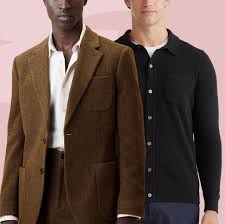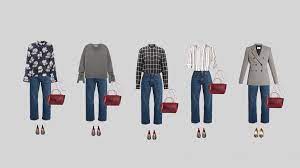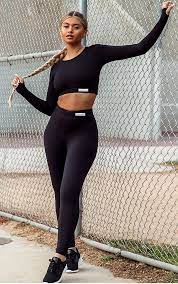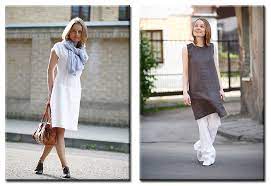Elevate Your Style: Mastering Smart Casual Attire for Men
Smart Casual Attire for Men
Smart casual attire strikes the perfect balance between formal and informal dressing, offering men a versatile and stylish option for various occasions. Whether you’re heading to a casual work event, a dinner date, or a weekend gathering, mastering the art of smart casual dressing is essential. Here are some key tips to help you nail the smart casual look:
Start with Tailored Pieces
The foundation of smart casual dressing lies in well-fitted clothing. Opt for tailored pieces such as slim-fit trousers, chinos, and blazers that flatter your silhouette without being overly formal.
Mix and Match Textures
Create visual interest by mixing different textures in your outfit. Pair a crisp cotton shirt with a knit jumper or layer a tweed blazer over a lightweight shirt for added depth and dimension.
Choose Quality Footwear
Your choice of footwear can make or break your smart casual look. Invest in quality leather shoes such as brogues, loafers, or Chelsea boots to elevate your outfit while maintaining a relaxed vibe.
Accessorise Wisely
Add personality to your ensemble with carefully chosen accessories. A classic watch, leather belt, or patterned pocket square can enhance your look without overpowering it.
Embrace Colour Coordination
While smart casual allows for more flexibility in colour choices, it’s essential to maintain a sense of coordination. Opt for complementary hues and avoid clashing colours to achieve a polished appearance.
In conclusion, mastering smart casual attire involves striking the right balance between sophistication and comfort. By combining tailored pieces, mixing textures, choosing quality footwear, accessorising wisely, and embracing colour coordination, you can create effortlessly stylish outfits for any occasion.
Mastering Smart Casual: A Guide to Men’s Attire – Understanding the Essentials and Fine-Tuning Your Look
- What exactly is smart casual attire for men?
- Can I wear jeans as part of a smart casual outfit?
- Are trainers acceptable for smart casual dressing?
- How can I accessorise a smart casual look?
- What footwear is appropriate for smart casual attire?
- Should I tuck in my shirt for a smart casual outfit?
- Can I wear shorts in a smart casual setting?
- Is it okay to layer clothing for a smart casual look?
What exactly is smart casual attire for men?
Smart casual attire for men strikes a fine balance between formal and informal dressing, offering a versatile and stylish option for various occasions. It typically involves combining tailored pieces with more relaxed elements to create a polished yet comfortable look. Smart casual attire for men often includes items such as well-fitted trousers or chinos paired with a button-down shirt or polo shirt, complemented by a blazer or knitwear. The key is to look put-together without being overly formal, allowing for individual style expression while maintaining a sense of sophistication.
Can I wear jeans as part of a smart casual outfit?
When it comes to smart casual attire for men, the question of whether jeans can be incorporated into the outfit often arises. The answer is yes, but with some considerations. Opt for dark-wash or black jeans with a tailored fit to maintain a smart appearance. Pair them with a crisp shirt, a blazer, and dress shoes to elevate the look. By choosing high-quality denim and styling it appropriately, you can confidently wear jeans as part of a smart casual outfit while still exuding sophistication and style.
Are trainers acceptable for smart casual dressing?
When it comes to smart casual attire for men, the question of whether trainers are acceptable often arises. While trainers can add a touch of modernity and comfort to a smart casual outfit, it’s crucial to choose the right style and pair them appropriately. Opt for sleek, minimalist trainers in neutral colours that complement your overall look rather than draw attention away from it. Additionally, ensure that your trainers are clean and well-maintained to uphold the smart aspect of your ensemble. Ultimately, with careful consideration and styling, trainers can indeed be acceptable for smart casual dressing, striking a harmonious balance between style and comfort.
How can I accessorise a smart casual look?
When it comes to accessorising a smart casual look for men, the key is to strike a balance between adding personality and maintaining a polished appearance. Opt for classic accessories such as a stylish watch, leather belt, or patterned pocket square to elevate your outfit without overpowering it. These subtle touches can enhance your overall look and showcase your attention to detail. Remember, less is often more when it comes to accessorising smart casual attire, so choose items that complement your outfit rather than compete with it. By incorporating tasteful accessories into your ensemble, you can effortlessly elevate your smart casual look and make a stylish statement.
What footwear is appropriate for smart casual attire?
When it comes to smart casual attire for men, choosing the right footwear is crucial in completing a polished and stylish look. Opt for quality leather shoes such as brogues, loafers, or Chelsea boots to strike the perfect balance between formal and relaxed. These versatile options not only add sophistication to your outfit but also ensure comfort and versatility for various occasions. Whether you’re dressing up for a work event or a weekend gathering, investing in classic and well-crafted footwear is key to achieving a smart casual ensemble that exudes confidence and elegance.
Should I tuck in my shirt for a smart casual outfit?
When it comes to achieving a smart casual look, the question of whether to tuck in your shirt is a common dilemma for men. In most cases, tucking in your shirt can elevate your outfit and add a touch of sophistication to your ensemble. A neatly tucked shirt creates a cleaner silhouette and helps define your waistline, giving off a polished and put-together appearance. However, there are instances where leaving your shirt untucked can also work well for a more relaxed and casual vibe. Ultimately, the decision to tuck in your shirt for a smart casual outfit depends on the specific occasion, personal style preferences, and the overall look you want to achieve.
Can I wear shorts in a smart casual setting?
In the realm of smart casual attire for men, the question of whether shorts are acceptable in a smart casual setting often arises. While shorts can offer comfort and a relaxed vibe, they are generally considered too informal for traditional smart casual occasions. Instead, opt for tailored trousers or chinos to maintain a polished and sophisticated look while still embracing the laid-back essence of smart casual dressing. By choosing appropriate bottoms that strike the right balance between formal and casual, you can ensure that your outfit exudes style and versatility without compromising on elegance.
Is it okay to layer clothing for a smart casual look?
Layering clothing is not only okay but highly encouraged when aiming for a smart casual look for men. Strategic layering can add depth, visual interest, and versatility to your outfit. Consider combining a well-fitted shirt with a lightweight jumper or cardigan, paired with tailored trousers or chinos and a stylish blazer. This approach not only allows you to adapt to changing temperatures but also adds a sophisticated touch to your ensemble. By mastering the art of layering, you can effortlessly elevate your smart casual style while maintaining a polished and refined appearance.









